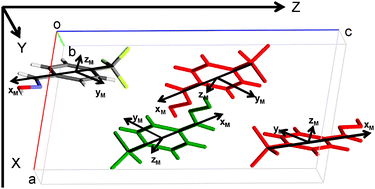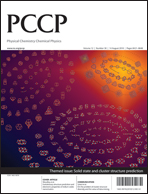Crystal structure prediction for organic molecules requires both the fast assessment of thousands to millions of crystal structures and the greatest possible accuracy in their relative energies. We describe a crystal lattice simulation program, DMACRYS, emphasizing the features that make it suitable for use in crystal structure prediction for pharmaceutical molecules using accurate anisotropic atom–atom model intermolecular potentials based on the theory of intermolecular forces. DMACRYS can optimize the lattice energy of a crystal, calculate the second derivative properties, and reduce the symmetry of the spacegroup to move away from a transition state. The calculated terahertz frequency k = 0 rigid-body lattice modes and elastic tensor can be used to estimate free energies. The program uses a distributed multipole electrostatic model (Qat, t = 00,…,44s) for the electrostatic fields, and can use anisotropic atom–atom repulsion models, damped isotropic dispersion up to R−10, as well as a range of empirically fitted isotropic exp-6 atom–atom models with different definitions of atomic types. A new feature is that an accurate model for the induction energy contribution to the lattice energy has been implemented that uses atomic anisotropic dipole polarizability models (αat, t = (10,10)…(11c,11s)) to evaluate the changes in the molecular charge density induced by the electrostatic field within the crystal. It is demonstrated, using the four polymorphs of the pharmaceutical carbamazepine C15H12N2O, that whilst reproducing crystal structures is relatively easy, calculating the polymorphic energy differences to the accuracy of a few kJ mol−1 required for applications is very demanding of assumptions made in the modelling. Thus DMACRYS enables the comparison of both known and hypothetical crystal structures as an aid to the development of pharmaceuticals and other speciality organic materials, and provides a tool to develop the modelling of the intermolecular forces involved in molecular recognition processes.


 Please wait while we load your content...
Please wait while we load your content...